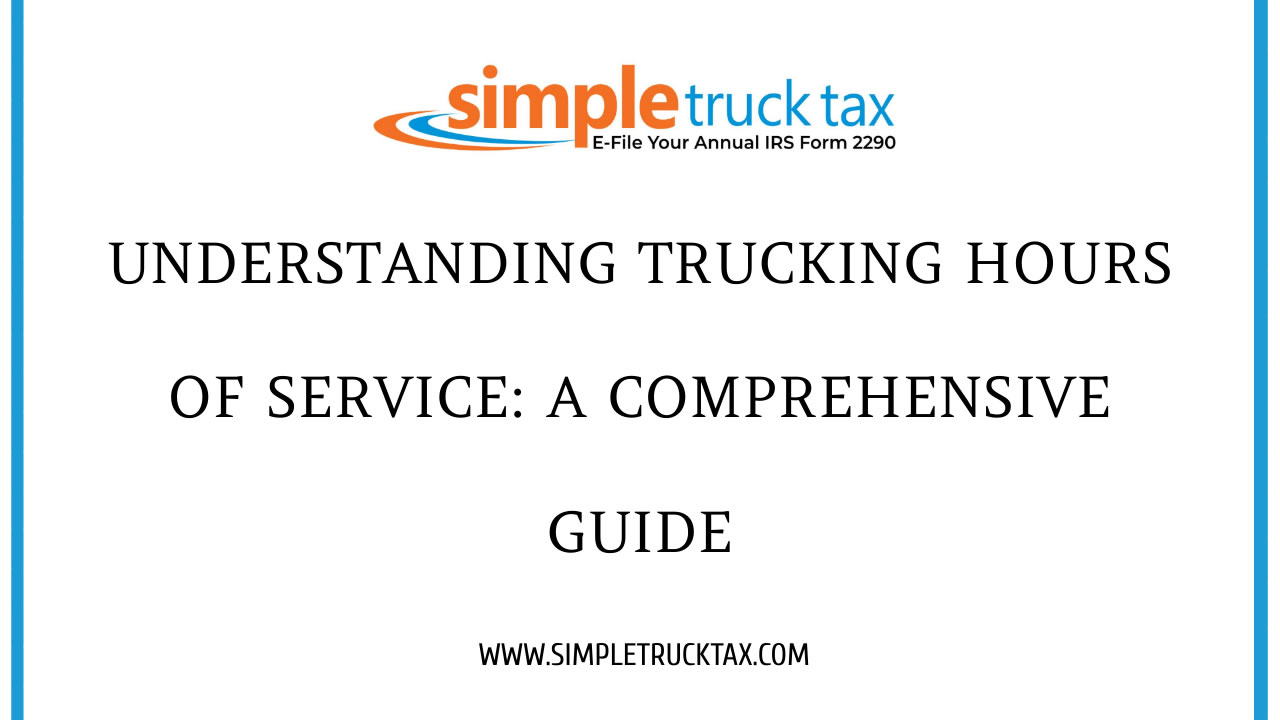
Understanding Trucking Hours of Service: A Comprehensive Guide
Getting Acquainted with the Trucking Hours of Service: Good, Bad, and the Facts
Trucking hours of service (HOS) have become an important measure to enhance the road safety among the truck drivers and other road users. These timetables determine the maximum amount of time a driver is allowed to operate their vehicle before taking a break and the minimum time they should rest before going for the next shift. To be fair, anyone investing their time and energy in the trucking business should be familiar with these rules and their requirements from the drivers to the fleet managers. This ensures that the employees do not only understand HOS but also adhere to it. This guide includes general guidelines for the comprehension of HOS regulations and recommendations for compliance with HOS regulations.
What Does the Term Trucking Hours of Service Regulations Comprise?
The Hours of Service regulations are legislations in United States made by the Federal Motor Carrier Safety Administration to address the possibility of accidents caused by tiredness of the driver. A trucking hours of service applies to Commercial motor vehicle operators who drive vehicles which transport cargo and or persons. Most importantly, the HOS regulations consider bringing safety to the driver as the main objective which reduces the chances of the drivers being involved in road accidents at a later stage due to lack of sleep.
Key Components of Hours of Service Regulations
- Maximum Driving Time Limits There are limits on the number of hours a driver can operate a vehicle within a 14 hours of work and this is up to a maximum of 11 hours. Once this limit is reached, drivers are subjected to resting, and in this way after taking a break, will go on, they have been reset, only then will they continue still the same. In this manner, it is assured that there is no excessive prolonged exposure of any particular driver on road for extending duration of time leading towards tiredness and possible wrong decision making.
- 14-Hour Workday Limit According to the 14 hour Workday law, a driver will not operate a vehicle for more than 14 successive hours when he/she is on duty, having had a rest period of10 consecutive hours. To further explain, it means that total time with respect to spending a working day by the driver, including any driving and also none driving duties, there shall be 14 hours within one day.
- Mandatory Rest Breaks A 30-minute rest is taken after 8 hours of driving time by the drivers. This break is taken at the driver’s option within the 8 hours but such a break must finish before the driver can undertake the job again.
- 60/70-Hour Duty Limit The 60/70 hour limitation refers to number of work hours limited to a given number of days said to be 7/8 without incurring a violation. There should be no more than 60 hours a driver is on duty in 7 days of work if not all days of the week there is the use of truck by the company. If the company possesses the trucks every day, then the limit becomes 70 consumption hours in 8 days of work.
The Importance of Compliance.
The failure to adhere to HOS regulations would gravitate towards worrisome disciplinary measures such as levy of fines, suspension of issuance of driving licenses up to the level of prosecutions for gross violations in serious crimes.
Further, a tampering or consistent disregard of these rules and policies by businesses can expose them to higher risk, litigation and a negative image for the business.
Tips for Avoiding Non-Compliance
- Make Use of ELDs Electronic Logging Devices (ELDs) keeps record of driving hours, hence, accurate indication of logged in service is done. The ELD devices are obligatory for most commercial drivers as imposed by FMCSA improving adherence to HOS as a better approach.
- Plan Routes and Rest Periods Ahead When these procedures are completed, the drivers are able to plan their routes so that they can complete the required number of hours, run their deliveries and also be able to rest properly without rushing at the last minute. Scheduling rest breaks in advance helps to eliminate the urgent need to rush looking for available parking spots.
- Educate Drivers and Staff Compliance derives through training that is continuous, and therefore helps in adherence of the policies and regulations by the drivers and dispatchers. Realizing the significance of observing the regulations and being trained on them reduces violations and ensures that the roads are safe.
- Monitor and Review Driving Hours Observing and reviewing driving hours on a continual basis help to manage the risks. Fleet supervisors must regularly and routinely enhance the logs and finding and resolving their inaccuracies promptly.
Hours of Service compliance in trucking continues to be of utmost importance to not only the drivers, but every person on the road.
There are three things which if followed together with ELDs and proper planning and educating the truckers on the use of Technological developments, trucking companies can remain compliant and avoid the fines imposed as well as make roads safer.
Note: For more information, visit IRS website